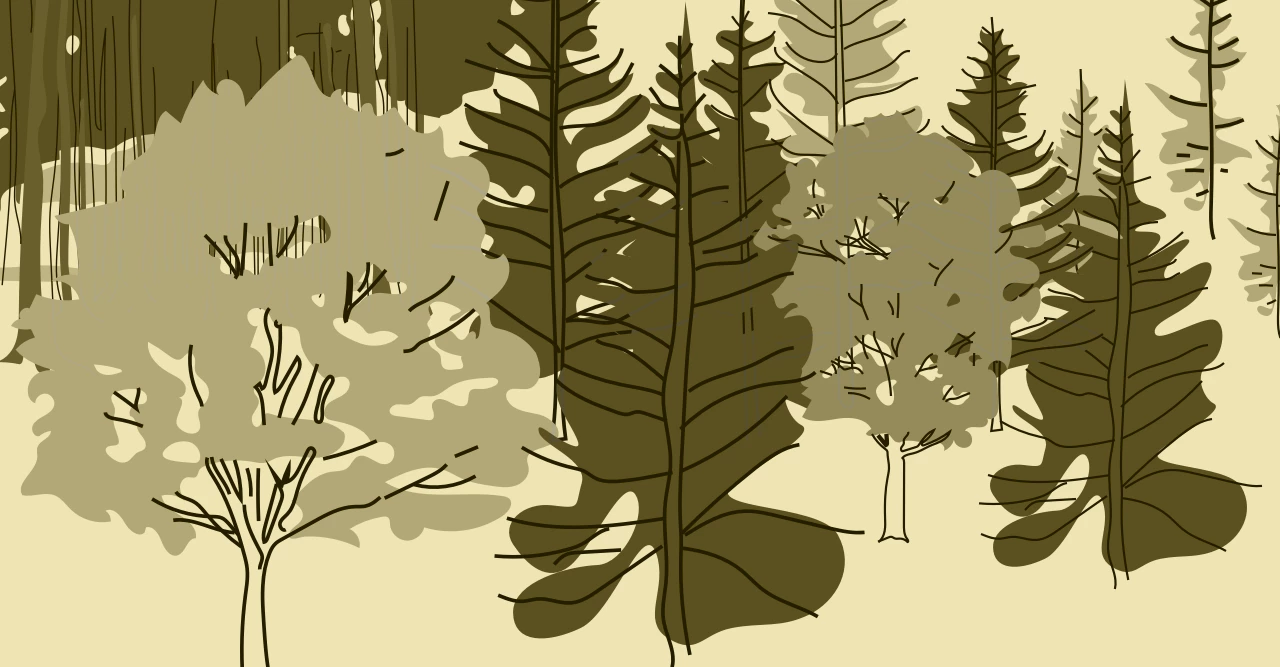Planting for Success: Planting Strategies and Wildlife Protection

In many forest restoration and reforestation projects in the Netherlands, young trees face high pressure from browsing wildlife. Climate change adds stress, with warmer, drier summers, especially on large clear-cuts. This good practice shows how wildlife protection and strategic planting of larger stock in small groups improve survival and support the recovery of a healthy forest structure.
Problem Description:
In many forest restoration and reforestation projects, young trees face high pressure from browsing wildlife. In the Netherlands, roe deer and wild boar have the greatest impact on young plantations, while fallow and red deer are rarely present. However, this does not mean that the strategies described here would not also be relevant for the establishment of the plantation in areas where fallow and red deer are present.
In addition, young trees are increasingly exposed to the effects of climate change: summers are becoming warmer and drier, which is especially evident on large clear-cuts. On these open, light-rich, and dry sites, young trees often struggle to establish themselves and to develop a stable forest microclimate.
This good practice focuses on strategies to address these challenges, with an emphasis on effective wildlife protection and strategic planting, such as the use of larger planting stock in small groups. It demonstrates which measures are most effective in increasing the survival of young trees and supporting the recovery of a healthy forest structure.
Implementation Steps:
Maintaining a stable forest microclimate is essential in restoration projects. The canopy protects understory vegetation and the forest floor from direct sunlight, buffering fluctuations in temperature, humidity, and wind. Many forest species, including shade-tolerant trees (beech, hornbeam, linden), mosses, fungi, and insects, depend on this microclimate to survive. Small-scale forest management, which keeps the forest as closed as possible, helps preserve this microclimate. Clearings and regeneration areas are limited to no more than one to two times the height of surrounding trees, and heavy thinning is avoided.
Within this framework, we plant clumps of 5 to 25 trees to increase structural and species diversity while taking advantage of the microclimate created by the surrounding forest. Using larger planting stock (≥150 cm) reduces browsing by roe deer, as they cannot reach the top shoots. Bamboo sticks arranged in a triangular formation protect these larger plants from rubbing damage.
When some species are unavailable as large planting stock, small protective enclosures are installed around the groups. These are deliberately low so that deer do not jump in, effectively preventing browsing. The enclosures are built using Z-profiles and fine-mesh fencing, allowing trees to establish safely.
Knowledge Types:
This good practice represents primarily practical knowledge. Our organization has been experimenting with these methods for few years. Ongoing monitoring shows that the results are positive, with improved survival of young trees.
Replicability:
YES, the practice has been tested and replicated in multiple contexts and scales and therefore, can be easily transferred and/or adapted to other initiatives with similar goalsKey Success Factors:
- Specialized knowledge of the light requirements of different species is essential: some trees prefer full shade, while others need slightly more light. Choosing the appropriate site for each species is also crucial to maximize survival.
- The implementation of the practice requires that contractors and forest managers understand each other well and communicate effectively, so that planting locations are correctly identified, protective measures are properly applied, and machinery is used carefully to avoid damage to the young trees.
Common Constraints:
- Some species are not available as large planting stock (≥150 cm), making it difficult to apply protective measures or maximize survival rates.
- Large planting stock and protective enclosures can be expensive. Budget limitations may require prioritizing which areas to plant and protect.
Lessons Learnt:
- Fixed paths help protect young trees and maintain the microclimate by limiting machine impact to designated tracks.
- Contractors can be guided effectively using apps that integrate with GIS platforms such as ArcGIS or QGIS, ensuring they locate planting clumps accurately and follow management instructions.
- When using a small planting raster, do not exceed an 8 × 8 layout
Positive Impacts:
- Improved tree species regeneration
- Increased structural diversity
Negative Impacts:
- Reduced access to markets or income sources
- Implementation
- Landowners & Practitioners
- Planners & Implementers
- Tree species/functional diversity
- Atlantic
- Netherlands

